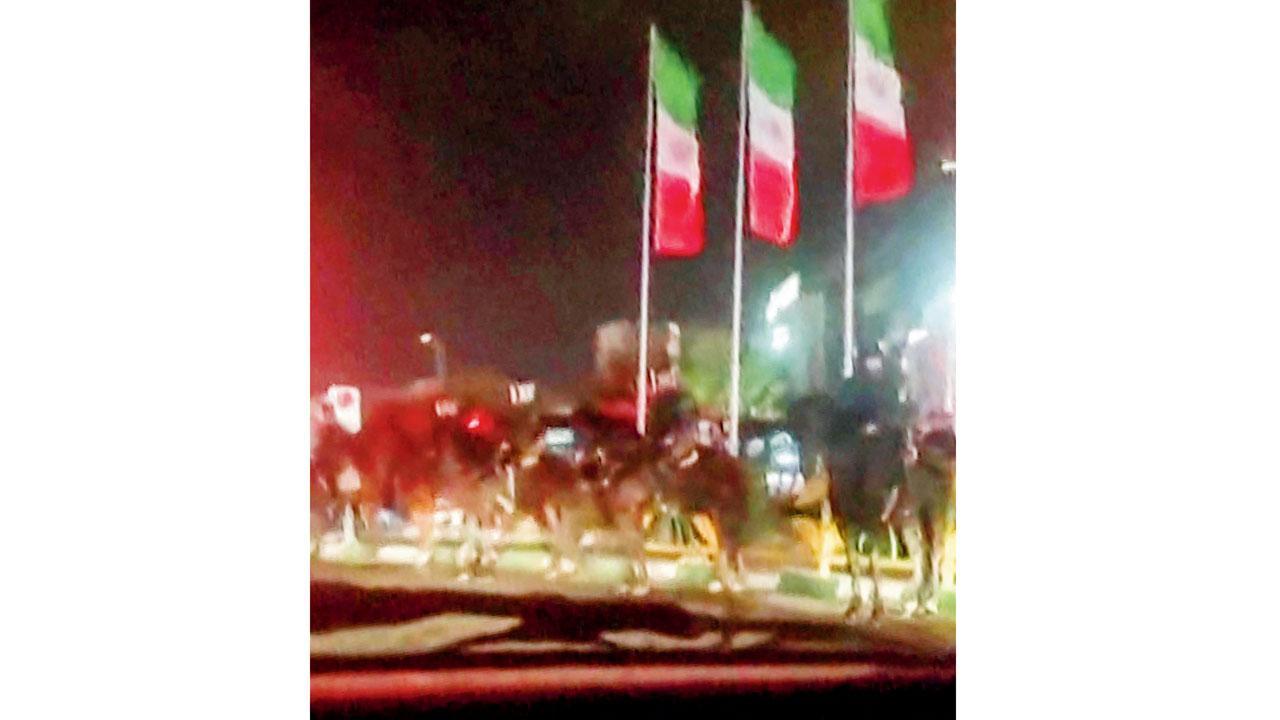The protests in Iran, sparked by the September 16 death of a 22-year-old woman after her detention by the country’s morality police, have grown into one of the largest sustained challenges to the nation’s theocracy since the chaotic months after its 1979 Islamic Revolution

A mounted police unit patrolling in Sadeghiyeh district of Tehran on November 7. Pic/AFP
Protests in Iran raged on streets into Thursday with demonstrators remembering a bloody crackdown in the country’s southeast, even as the nation’s intelligence minister and army chief renewed threats against local dissent and the broader world. Meanwhile, a top official in Iran’s paramilitary Revolutionary Guard claimed it had “achieved” having so-called hypersonic missiles, without providing any evidence.
ADVERTISEMENT
The protests in Iran, sparked by the September 16 death of a 22-year-old woman after her detention by the country’s morality police, have grown into one of the largest sustained challenges to the nation’s theocracy since the chaotic months after its 1979 Islamic Revolution. At least 328 people have been killed and 14,825 others arrested in the unrest, according to Human Rights Activists in Iran, a group that’s been monitoring the protests over their 54 days.
Also Read: Iran’s judiciary to deal firmly with protesters
Iran’s government for weeks has remained silent on casualty figures while state media counterfactually claims security forces have killed no one. As demonstrators now return to the streets to mark 40th-day remembrances for those slain earlier - commemorations common in Iran and the wider Middle East - the protests may turn into cyclical confrontations between an increasingly disillusioned public and security forces that turn to greater violence to suppress them.
Online videos emerging from Iran, despite government efforts to suppress the internet, appeared to show demonstrations in Tehran, the capital, as well as cities elsewhere in the country. Near Isfahan, video showed clouds of tear gas. Shouts of “Death to the Dictator” could be heard - a common chant in the protests targeting Iran’s Supreme Leader Ayatollah Ali Khamenei. It wasn’t immediately clear if there were injuries or arrests in this round of protests, though Iran’s state-run IRNA news agency acknowledged the demonstrations near Isfahan.
14,825
No of people arrested so far in the protests
This story has been sourced from a third party syndicated feed, agencies. Mid-day accepts no responsibility or liability for its dependability, trustworthiness, reliability and data of the text. Mid-day management/mid-day.com reserves the sole right to alter, delete or remove (without notice) the content in its absolute discretion for any reason whatsoever
 Subscribe today by clicking the link and stay updated with the latest news!" Click here!
Subscribe today by clicking the link and stay updated with the latest news!" Click here!







